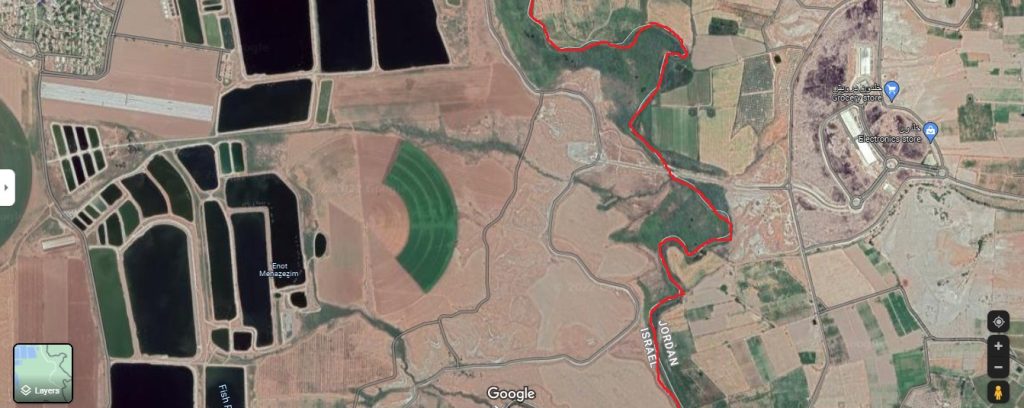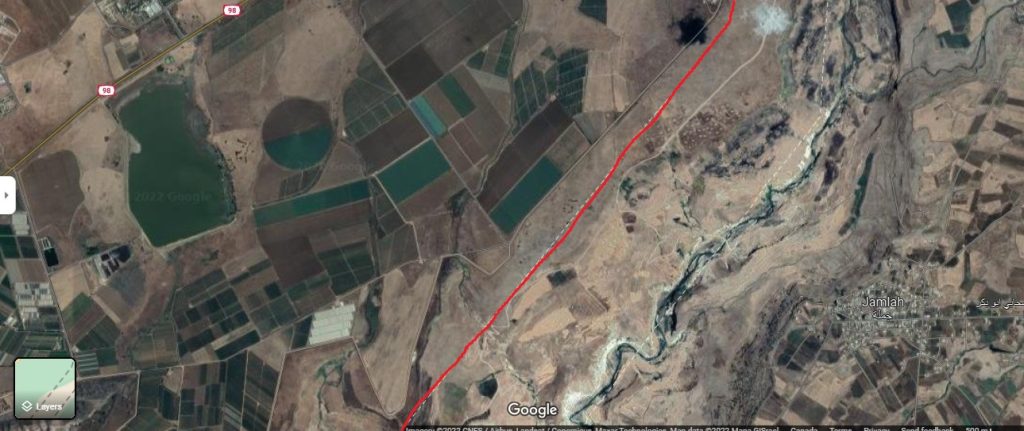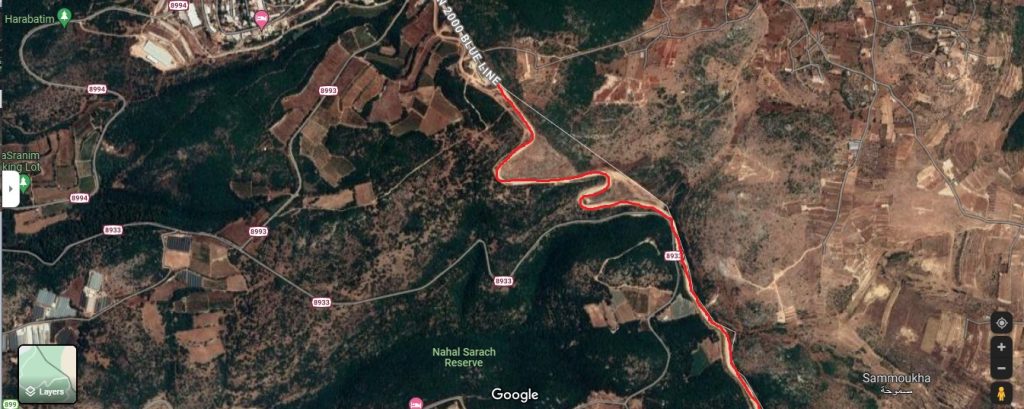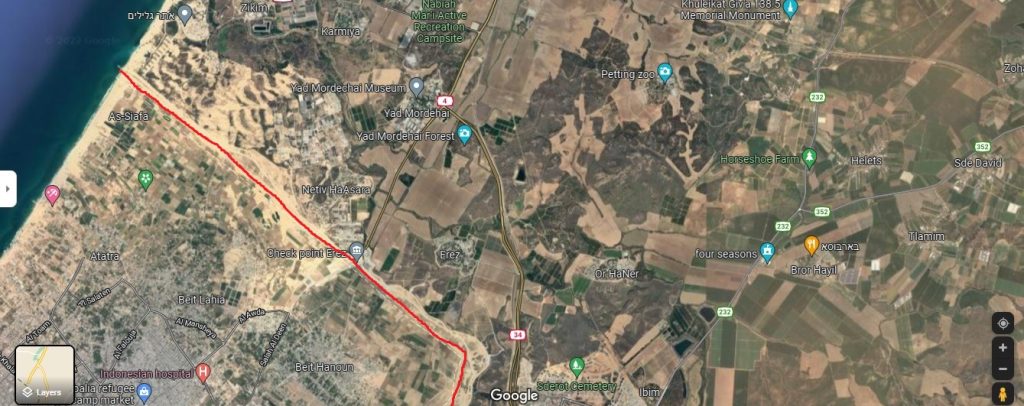In 1867 celebrated American author Mark Twain, visited the land of Israel (Palestine as it was called). He travelled across the land, writing his observations in his best-selling book Innocents Abroad. He used the words “unpicturesque”, “unsightly”, and “desolate” to describe what he saw. Twain wrote,
“Palestine sits in sackcloth and ashes…. desolate and unlovely.”
Innocents Abroad
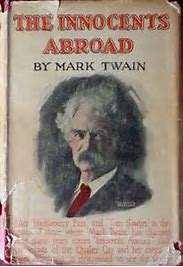
Of the Jezreel valley, Twain wrote,
“Stirring scenes … occur in the valley no more. There is not a solitary village throughout its whole extent-not for thirty miles in either direction. There are two or three small clusters of Bedouin tents, but not a single permanent habitation. One may ride ten miles hereabouts and not see ten human beings.”
Innocents Abroad
He described the Galilee as
“the sort of solitude to make one dreary … Come to Galilee for that … these unpeopled deserts, these rusty mounds of barrenness, that never, never do shake the glare from their harsh outlines, and fade and faint into vague perspective; that melancholy ruin of Capernaum: this stupid village of Tiberias, slumbering under its six funereal palms … “
Innocents Abroad
Mount Tabor …
“stands solitary … [in a] silent plain … a desolation … we never saw a human being on the whole route … hardly a tree or shrub anywhere. Even the olive tree and the cactus, those fast friends of a worthless soil, had almost deserted the country”
Innocents Abroad
Desolate Land or ‘flowing with Milk and Honey’?
Mark Twain was particularly baffled because what he saw did not match at all what he read in the Bible, where powerful kings ruled over people, multitudes of people thronged around Jesus, and what was described many times in the Bible as:
… a land flowing with milk and honey.
Jeremiah 32:22
So what happened to the land?
It is what Jesus said and did on this Tuesday – Day 3 of Passion Week – that explains it. Jesus used mannerisms replete with symbolism and withering criticism of the people in his day. In doing so he demonstrated a gift for drama which we regularly witness from some similarly gifted fellow Jews today.
Witty & Gifted Critics Present and Past
Among the most gifted and well-known today for directing withering criticism, drama loaded with irony, and symbolic denunciation are Bill Maher, Seth Rogen, Ivan Urgant, and Sasha Baron Cohen.
Bill Maher, long running host of Real Time with Bill Maher, one of the most popular late night shows in the USA, regularly engages in political satire and social commentary, leaving none free of his withering criticism.
Seth Rogen, a Canadian comedian and filmmaker, achieved unique notoriety with his movie The Interview, portraying journalists undertaking an assassination attempt on North Korean dictator Kim Jung-un. North Korea threatened ‘merciless’ retaliation unless the movie was withdrawn. The controversy generated wide publicity and gained Rogen prominence for his ability to needle the North Korean dictator.
Sasha Baron Cohen, the well-known British satirist who, through his wild alter-ego characters Borat– the Kazak journalist, Bruno– the gay Austrian fashion reporter, General Aladeen in The Dictator has enraged so many groups that Cohen has had to increase his security detail.
Ivan Urgant, the host of the most popular Russian late-night TV show, had his show Evening Urgant cancelled because he criticized the Russian invasion of Ukraine.




Okras, CC BY-SA 4.0, via Wikimedia Commons
Apart from being well-known for their satirical criticism, what these four all have in common is their common Jewish heritage. They illustrate that, though small in number, Jewish satirists are among the leaders in this genre of drama.
Jesus likewise was a master critic. But the criticism he leveled on that day has affected human history far more than modern-day critics’ ability to arouse satire lasting only through the next news cycle. It evoked Mark Twain’s wonder centuries later
Jesus’ Looming Conflict
First we review the week and then look at what he did that day.
Jesus had entered Jerusalem on Sunday as prophesied and then shut down the Temple on Monday. So the Jewish leaders planned to kill him. But it would not be straight-forward.
God had selected Jesus as His Passover Lamb when Jesus entered the Temple on Monday, Nisan 10. The Torah regulated what to do with the selected Passover lambs
6 Take care of them until the fourteenth day of the month, when all the members of the community of Israel must slaughter them at twilight.
Exodus 12:6
As the people cared for their Passover Lambs, so also God cared for His Passover Lamb. Thus Jesus’ enemies could not get at him (yet). The Gospel then records what Jesus did the next day, Tuesday, Day Three of Passion Week.
Jesus Curses a Fig Tree
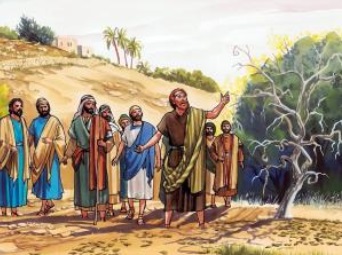
17 And he left them and went out of the city to Bethany, where he spent the night.
18 Early in the morning, as Jesus was on his way back to the city, he was hungry. 19 Seeing a fig tree by the road, he went up to it but found nothing on it except leaves. Then he said to it, “May you never bear fruit again!” Immediately the tree withered.
Matthew 21: 17-19
Why did he do that?
What did it mean?
The disciples were amazed, leading to a puzzling statement from Jesus about casting mountains into the sea.
20 When the disciples saw this, they were amazed. “How did the fig tree wither so quickly?” they asked.
21 Jesus replied, “Truly I tell you, if you have faith and do not doubt, not only can you do what was done to the fig tree, but also you can say to this mountain, ‘Go, throw yourself into the sea,’ and it will be done. 22 If you believe, you will receive whatever you ask for in prayer.”
Matthew 21: 20-22
The meaning of the Fig Tree
The earlier prophets explain it to us. Notice here how the Hebrew prophets used the Fig Tree to picture Judgment on Israel:
The prophet Hosea went further, using the fig tree to picture and then curse Israel:
10 “When I found Israel,
Hosea 9:10
it was like finding grapes in the desert;
when I saw your ancestors,
it was like seeing the early fruit on the fig tree.
But when they came to Baal Peor,
they consecrated themselves to that shameful idol
and became as vile as the thing they loved.
16 Ephraim is blighted,
their root is withered,
they yield no fruit.
Even if they bear children,
I will slay their cherished offspring.”17 My God will reject them
Hosea 9:16-17 (Ephraim=Israel)
because they have not obeyed him;
they will be wanderers among the nations.
The destruction of Jerusalem in 586 BCE fulfilled these and Moses’ curses (see the history).
When Jesus cursed the fig tree, he symbolically pronounced another coming destruction of Jerusalem and Jewish exile from the land. He cursed them into exile again.
After cursing the fig tree, Jesus re-entered the Temple, teaching, debating and clarifying his curse, especially on the Jewish leaders. The Gospel records it this way.
Not an empty one – The Curse takes hold
We know from history that this destruction of Jerusalem and its Temple, along with the expulsion of the Jews into worldwide exile, happened in 70 C.E.
With the Temple destruction in 70 CE Israel’s withering took place. Then, it remained withered for thousands of years.

This curse does not reside simply in the pages of the Gospel story. We can verify it happened in history. This Withering Curse pronounced by Jesus lasted many generations. The people of his day ignored him to their destruction.
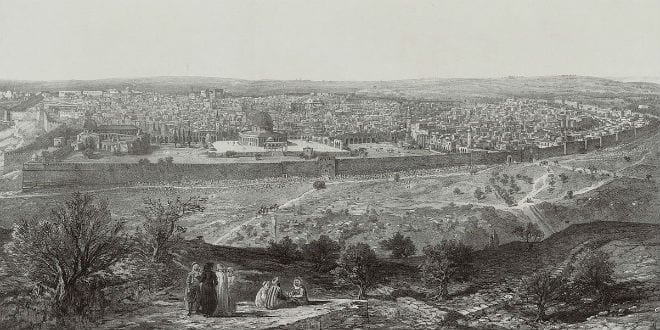

The Curse to Expire
Jesus later clarified how that curse would come and how long it would last.

24 They will fall by the sword and will be taken as prisoners to all the nations. Jerusalem will be trampled on by the Gentiles until the times of the Gentiles are fulfilled.
Luke 21:24
He taught that his curse (exile and Gentile control over Jerusalem) would last only ‘until the times of the Gentiles (non-Jews) are fulfilled’. He thus implied that his Curse would expire, explaining this further on Day 4.
The Curse Lifted
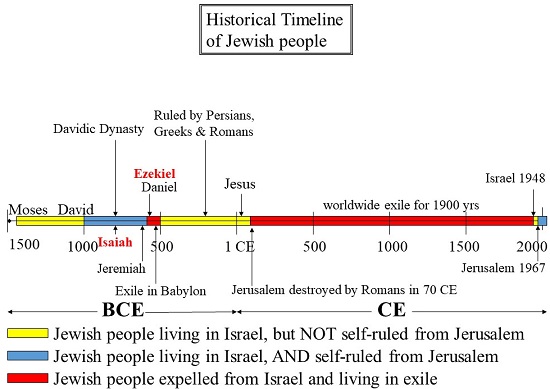
This timeline shows the history of the Jewish people with further details here. Coming to our modern day, the timeline shows the end of the exile. In 1948, from a UN declaration, the modern state of Israel was founded. In the 1967 six-day war the city of Jerusalem, now the capital of Israel, was regained. We see the ‘times of the Gentiles’ coming to a close in modern-day news events.
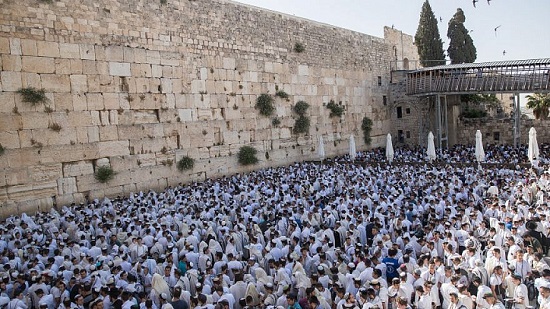
The beginning and expiration of Jesus’ curse, uttered symbolically to the fig tree and then explained to his listeners have not remained simply fiction on the pages of the Gospel. These events are verifiable, making news headlines today (ex., USA moved its embassy to Jerusalem). Jesus taught profoundly, voiced authority over nature, and now we see that his curse left its imprint on his nation for thousands of years. We ignore him at our peril.
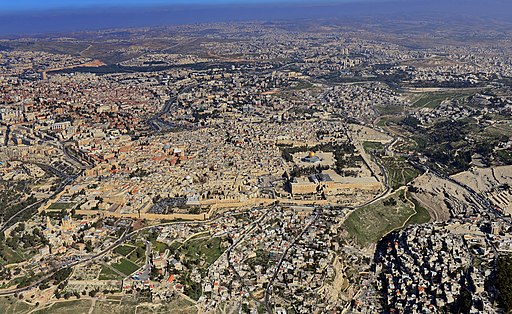
Summary of Day 3
The updated chart shows Jesus cursing the fig tree on Day 3, Tuesday, while taken care of as God’s Selected Lamb. We see on Day 4 he foretells his coming return, coming to set right many wrongs.

Postscript on the Day 3 Withering Curse
Jews have a reputation of leading in many areas of human undertaking. This is regardless of whether they are Israeli or part of the world-wide diaspora of Jews. But this is not true in agriculture. Only Israeli Jews carry this distinctive. Israel has carved out a hard-earned reputation as a leader in agricultural technology. This started when the Jews first made Aliyah to Palestine over a hundred years ago. They then formed kibbutzim and moshav (essentially different kinds of co-operative communal farms). The Galilean north was swampy, the Judean hills were rocky, and the south was desert. The land was exactly as Mark Twain had experienced and described it. So the first settlers had to drain malaria infested swamps, clear land, and learn to irrigate.
Blossoming Green in Today’s desert
Today Israel is a world leader in drip irrigation technology, growing and exporting many fruits, vegetables, grain and dairy products. This is true in spite of the fact that Israel is not naturally conducive to agriculture. Over half the land is natural desert. With water shortage being a major and continual problem there, Israeli farmers have become world leaders in irrigation technology.

Israeli farmers in just this last generation have been able to transform the land from a barren, withered landscape into a panorama of green. The satellite view in Google Maps shows this, comparing the borders they share with their neighbours. On Day 4, Jesus prophesied this would occur, holding a special meaning.

